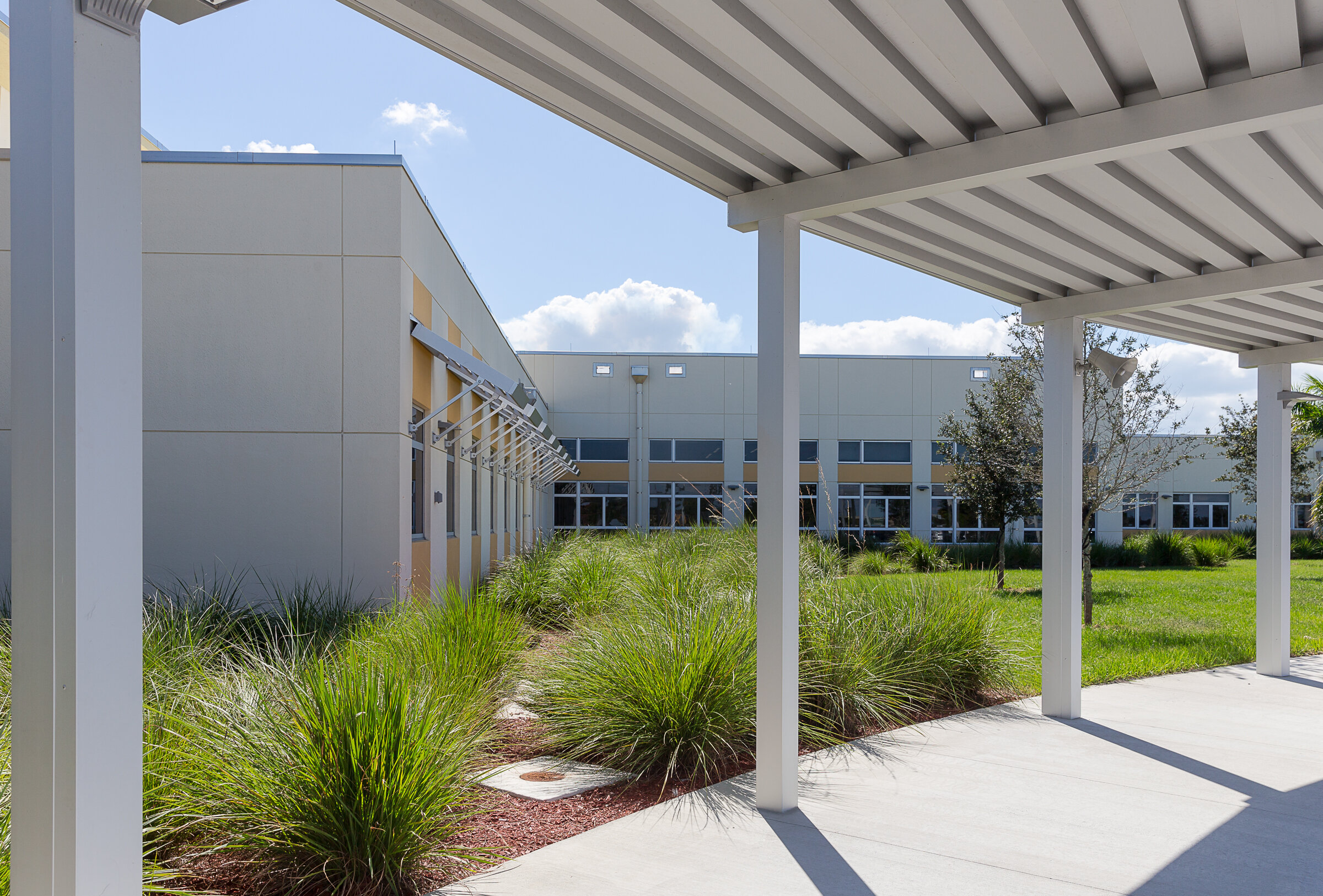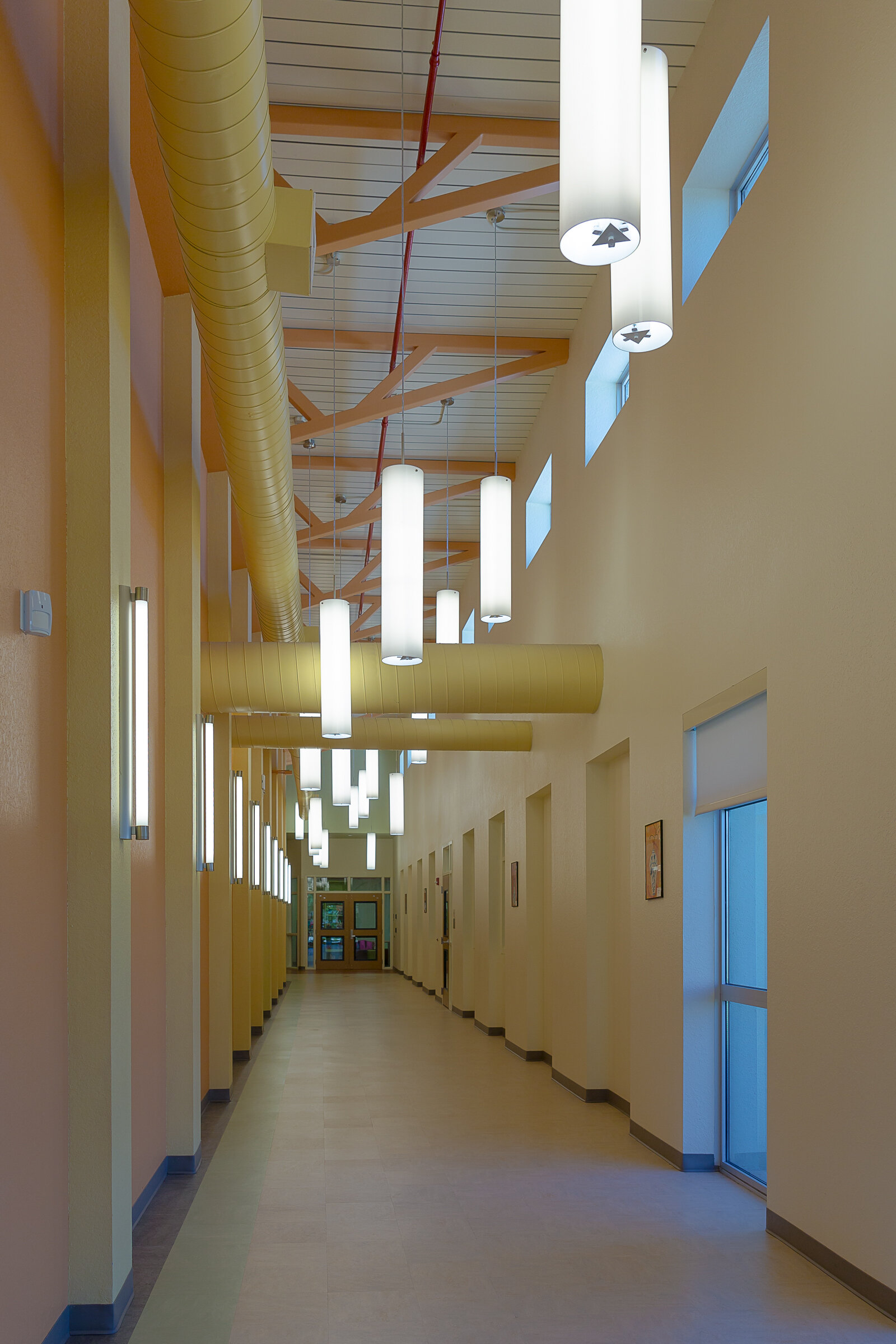Rosenwald Elementary School
Location:
South Bay, FL
Size:
66,555 SF
Booker T. Washington and Julius Rosenwald, philanthropist and president of Sears Roebuck, built state-of-the art schools for African-American children across the South. The effort has been called the most important initiative to advance black education in the early 20th century. The schools are a tangible statement of the equality of all children, and their programming made them a focal point of community identity and aspirations. By 1928, one-third of the South’s rural black school children and teachers were served by Rosenwald Schools.
Named after the historic program, this small elementary school serves only 314 students. Its presence is so important to this tiny community that the School Board agreed to modernize and replace the aging facility rather than close the school and send the children to neighboring cities.
The Importance of “Inside”
The primary industry of the area is the farming of sugar cane. To remove the outer leaves and prepare for harvest, sugar cane fields are burned sending hazardous pollutants into the air. The heavy smoke and ash prohibits outdoor play, keeping the children inside throughout the school day many times during the year. When the project began, the campus was a collection of individual buildings connected by open walkways. The replacement design creates one building connected on the interior by cheerful corridors. Clerestory glass, light colors, and specialty lighting give interest and warmth to these interior ‘streets.’ Circular shaped niches include bench ledges to create reading and gathering spots for students arranged around wider nodes and intersections of the corridors joining the classroom ‘neighborhoods.’
The new construction reconfigures the campus site keeping only the existing cafetorium building. The new design provides improved safety and well-being for students in an environment that supports community use. The school is truly the heart of this community.






